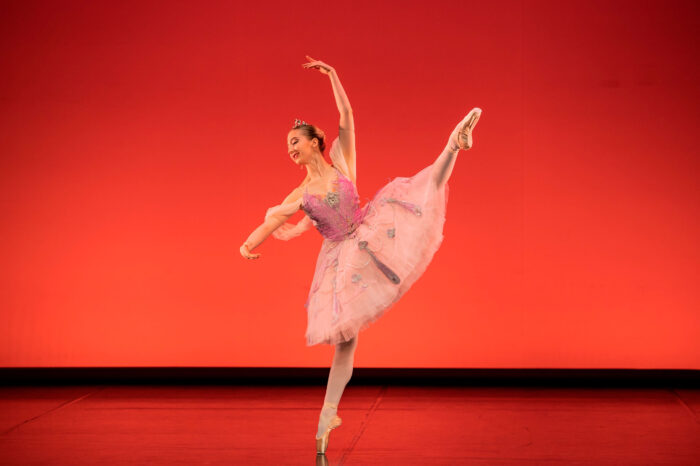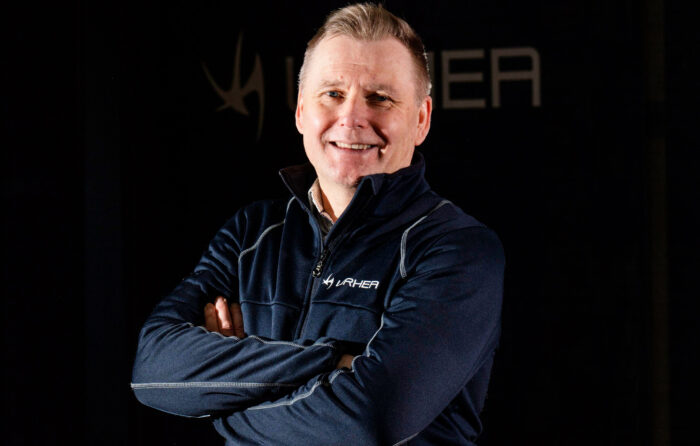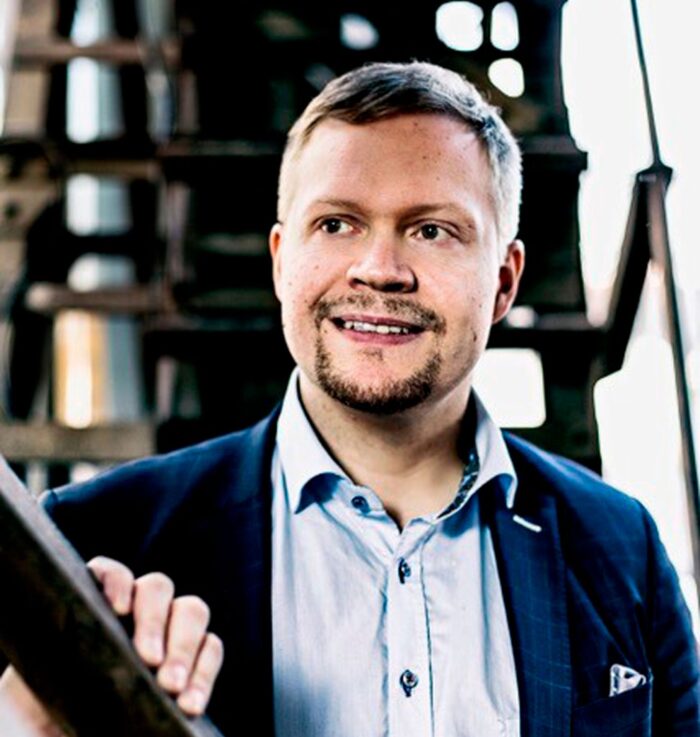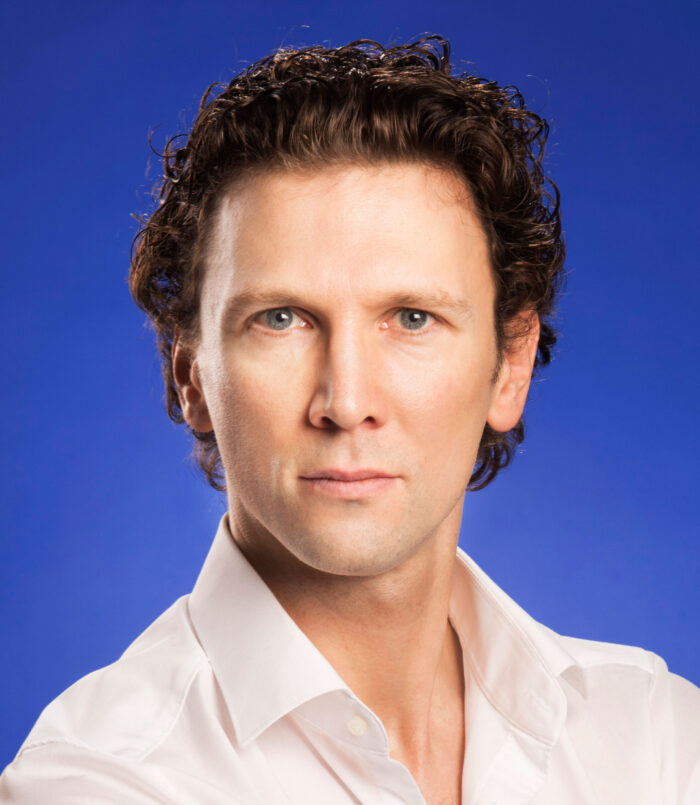Reaching the top requires support
The idea of everyone pursuing an interest is a great principle, but at the same time well-motivated children and young people striving to reach the top can be forgotten. Exceptional young talent also needs support to be able to pursue their dream.

(Photo: Ville Lehvonen/Nuorten pianoakatemia)
When Nanny Hedberg was fourteen, she fractured her knee during ballet practice. The injury would almost certainly have kept many others away from ballet school, but not Hedberg. She continued to go to practices each day at the Ballet School of the Finnish National Opera and Ballet, albeit just to watch others dance.
“At the same time, I understood how much ballet really meant to me”, Hedberg recalls seven years later.
Hedberg decided to focus on dancing seriously. She applied to study ballet at Oslo National Academy of the Arts in Norway, where she got a place at second attempt.
“When I started, I was certainly at the weaker end of the intake. I think I made an impression through my sheer persistence.”
Persistence was also reflected in the results. Three years later, Hedberg was selected for the National Ballet youth company, where she has now been dancing for three years. Next autumn, she will move up from the youth company to the National Ballet main company.
It is important to support talented young people like Hedberg, who take arts or sports seriously, if we want top-class dancers, musicians and athletes in Finland going forward.
In the same context, however, Hedberg points out an obvious problem: at the age of 14, hardly anyone could have imagined that she would actually become a professional.
But how can the potential in a young person be identified? We asked different people working with talented young people. The first answer involves a broad range of hobbies.

Nanny Hedberg
Dancer, the National Ballet youth company
(Photo: Roosa Oksaharju)
Exercise comes from everyday life
“If a ski coach in the 1950s had ten young people out of which to put together a relay team, in the 1980s there were just six and today a coach can often be pleased if he is lucky enough to find four enthusiastic skiers.”
This is how Simo Tarvonen, CEO of the Metropolitan Area Sports Academy Urhea Foundation, describes the change in sports. Many traditional sports, particularly Olympic sports, have lost a lot of enthusiasts through the decades. Even though team sports attract young people, especially in cities, the overall amount of physical exercise among children and young people is in decline everywhere, however.
This is a problem especially from the national health perspective – research shows that an active lifestyle learnt at a young age is the best way to ensure that a person gets exercise in middle age, too. And exercise is known to be very beneficial.
On the other hand, large numbers of amateurs also ensure more potential professional athletes. However, systematic training is not essential for children.
”In terms of children’s exercise, the most important thing is to enable a diverse range of exercise in everyday life, yard games and play. Goal-oriented physical exercise is a good bonus, but motor skills also develop through voluntary exercise if there’s enough enthusiasm to be active.”
”In terms of children’s exercise, the most important thing is to enable a diverse range of exercise in everyday life, yard games and play. Goal-oriented physical exercise is a good bonus, but motor skills also develop through voluntary exercise if there’s enough enthusiasm to be active.”
Simo Tarvonen
Transitions as danger points
This is how it is from the perspective of the masses. How can children and young people whose potential begins to turn into a talent at the age of around 15 be supported?
Tarvonen sees two danger points. One is the transition from lower to upper secondary school and the other is the transition from upper secondary school onwards.
“The young person’s own motivation is key. If sports can’t be combined with life otherwise, it’s easy to let go of the hobby.”
In the first change, a sports institute often acts as support, in the second change it’s sports academies like Urhea.
Tarvonen points out that the system currently works reasonably well, even if Olympic success is not at the level of years gone by.
“However, we’ve notched up success in sports like basketball, where we were earlier far from world class. I would also say that it’s also about a change in the sports pursued.”

Simo Tarvonen
CEO, the Metropolitan Area Sports Academy Urhea Foundation
The Jane and Aatos Erkko Foundation has granted a donation for the construction of the Urhea Sports Hall in 2019.
(Photo: Urhea-säätiö sr)
The system itself works regardless of the sport.
“The idea behind Urhea Sports Academy is to provide young athletes with a place where they can live, study and practice freely under the guidance of a professional coach. This is a cost-effective way to enable a young athlete to develop.”
Some of a sports academy’s operations is enabled by the foundations that support them. This is needed since money is often in short supply early on in an athlete’s career. In most sports, an athlete doesn’t reach the top until they’re in their twenties, but for serious competitors there are expenses before becoming a professional. At the same time, they still have to wait for potential success and the money it brings.
Because the future is uncertain, the aim in a sports academy is for a dual career: along with goal-oriented sports, studying from basic education to university can be built around individual needs.
“We usually talk about supporting people not athletes.”
“The young person’s own motivation is key. If sports can’t be combined with life otherwise, it’s easy to let go of the hobby.”
Simo Tarvonen
The Academy supports those aiming to become professionals
Music and sports are very different interests. All the same, the situation for children resembles sports in many ways in the big picture. The underlying principle of the network of music schools, which is maintained by public funds, is to promote the comprehensive pursuit of music by children and young people and not so much to train professional musicians.
Also in music high schools, the goal is largely to play and perform together. In the public sector, education aiming at a professional career is not usually available until university.
All the same, young people aiming to become professional still benefit from more goal-oriented teaching earlier”, says Niklas Pokki, Chairman of the Board of the Youth Piano Academy Finland.
The Youth Piano Academy Finland is, like the violin academy and the cello academy, a private school, whose idea is to support teenage musicians.
A requirement for admission to the academy is aiming for or at least considering a professional career. The youngest persons selected are 12 years old.
”Despite the potential, with children of primary school age, it’s still impossible to predict how motivation will be maintained in adolescence. This is why we have restricted admission to lower secondary school children.”
Admission is through auditions. Only just over a tenth of those taking the high-standard tests can ultimately be selected. In practice, this is the best in each age group.
The Youth Piano Academy Finland does not replace school or even music school, but comes on top of these. The main method of teaching is weekend camps with top teachers. Funding comes from private foundations.
“Teaching is free, but unfortunately there are travel costs, especially if a young person lives further away”, Pokki says.

Niklas Pokki
Chairman of the Board, the Youth Piano Academy Finland
The Jane and Aatos Erkko Foundation has granted donations for the operation of the Youth Piano Academy Finland in 2016, 2018 and 2022.
(Photo: Ville Lehvonen)
Ballet usually starts in childhood
When talking about hobbies where you need to start early to reach the top, ballet is often mentioned. This was also the case with Nanny Hedberg – she was six years old when she started at the Ballet School of the Finnish National Opera and Ballet – and has been dancing ever since.
The Ballet School also had an agreement with Kaisaniemi Lower Stage Comprehensive School on an arrangement where young schoolchildren could naturally go to the ballet after the end of the school day.
All the same, the requirement to start young is not in any way unconditional even for ballet” says Nicholas Ziegler, artistic coordinator of the National Ballet youth company.
”We have one male dancer who didn’t start ballet until he was 16. Although he did have a background in gymnastics.”
The most typical path to become a professional ballet dancer in Finland is nevertheless through the Finnish National Opera Ballet School.
Even so, only a small number of those starting ballet ultimately become professionals. Back in the day, Hedberg was in second grade at school and she had a total of some 30 classmates. Besides herself, only two others ended up in the youth company.
The biggest elimination takes place when trying to get into the youth company. Applicants come from around the world and only a small number can be selected for the youth company. Finns usually account for around half.
Ziegler does not consider the youth company to be a school.
”I think they are ready dancers but through the training programme they receive extra tuition and tools to act as professionals. They perform with actual dancers, practice every day and put on dozens of performances a year.”
This is why members of the youth company are also paid a salary, just like professionals.
In addition, their holistic development is monitored. The aim is to avoid injuries that plague many dancers and at the same time support the artistic development of a young dancer. Outside support enables both.

Nicholas Ziegler
Nuorisoryhmän taiteellinen koordinaattori, Suomen kansallisooppera ja -baletti
Jane ja Aatos Erkon säätiö on myöntänyt avustuksia kansallisbaletin nuorisoryhmän toimintaan vuosina 2013, 2015, 2018 ja 2022.
(Kuva: Mirka Kleemola)
Three years and out into the world
After two or at the latest three years, dancers in the youth company need to move on.
Some, like Hedberg, transferred to the National Ballet, where they can get a contract valid indefinitely. Others move abroad or go on to do something completely different.
Youth company coordinator Ziegler considers that the arrangement works.
“Two or three years is time enough to see how a young dancer develops and where their path leads. Performing both in their own productions and together with the National Ballet gives young people a wide range of experience.”